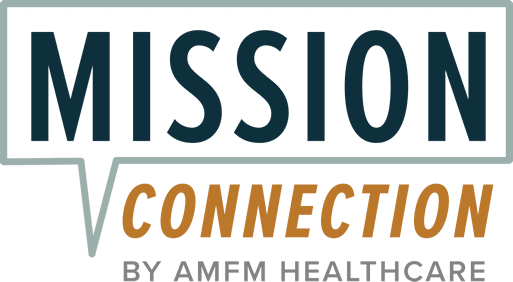Headaches Related to Stress & Anxiety in Adults: Causes and Relief

We all experience headaches from time to time, whether it’s because of allergies, light sensitivity, dehydration, or even stress – they’re an extremely common symptom. But when they become frequent and seem to appear during times of high stress, this may be our body’s way of sending us a message.
For many of us, stress and anxiety don’t just live in the mind – they show up physically, often as tension headaches, tightness across the forehead, or a dull ache that won’t go away.
These headaches are one of the most common physical symptoms of emotional strain. When our nervous system remains in “fight-or-flight” mode for too long, muscle tension builds, blood vessels constrict, and the body’s pain response intensifies.
If anxiety and stress headaches are affecting your life on a regular basis, a mental health professional can provide valuable guidance. Plus, understanding the connection between stress, anxiety, and headaches can help you learn how to relax and find relief. For this reason, on this page, you can learn about:
- What stress headaches are
- The connection between stress, anxiety, and headache pain
- Common symptoms and triggers to look out for
- Behavioral therapy for headaches that targets both the mind and body
- Headache relief strategies
- Answers to commonly asked questions about anxiety-related headaches

What Are Stress- and Anxiety-Related Headaches?
Tension headaches are particularly common for people who experience chronic stress or anxiety. According to research, stress is actually the most frequently reported trigger for headaches. Approximately 88% of people within this study claimed that their headaches were due to stress.2
Common symptoms of adult tension headaches include:
- A dull, aching pain or pressure on both sides of the head
- Tightness or tenderness in the neck, shoulders, or jaw
- A sensation of a “band” squeezing the head
- Increased fatigue or irritability
- Difficulty focusing or feeling mentally foggy
In many cases, stress and anxiety headaches are not isolated events – they’re part of a broader mind-body feedback loop in which emotional distress fuels physical pain, and physical pain, in turn, increases anxiety.
The Connection Between Stress, Anxiety, and Head Pain
This “fight-or-flight” response triggers a chain of physical reactions where our muscles tighten, blood vessels constrict, and breathing becomes shallow. For short-term stress, this reaction can help us stay alert. But when anxiety or emotional strain becomes chronic, the nervous system never fully relaxes. Over time, the continuous muscle tension in the head, neck, and shoulders leads to the dull, persistent pain often associated with stress-related headaches.
Anxiety can also intensify this cycle. For instance, when we worry about having another headache – or fear that pain means something serious – our body can remain in a state of vigilance. This ongoing tension increases pain sensitivity, making headaches feel even more severe or frequent. In other words, stress causes the headache, and anxiety keeps it going.
At its core, this cycle is a mind-body feedback loop. To break it down more clearly…
- Stress or anxiety activates the body’s tension response
- Physical discomfort or pain increases emotional distress
- The brain interprets this as more threat — keeping the stress cycle alive
Learning to regulate both the emotional and physical responses to stress can help interrupt this loop, easing both anxiety and pain over time.
Causes of Tension Headaches
There is no one, single cause for stress headaches. They often happen because of a combination of emotional strain, lifestyle habits, and physical tension that builds over time. The following are some of the most common factors that can contribute to stress- and anxiety-related headaches:
Emotional and Psychological Triggers
Firstly, chronic stress or worry can trigger tension headaches. The ongoing mental pressure to keep the body’s stress response activated tends to tighten muscles and constrict blood flow, leading to head strain.
Perfectionism and self-criticism can trigger headaches, as holding yourself to impossible standards can lead to persistent physical and mental tension. Suppressed or unresolved emotions, such as anger, grief, or fear can also surface through physical symptoms like headaches.
Major life transitions, like moving house, changing jobs, or relationship breakups can put our bodies in a state of prolonged stress or uncertainty. These transitions can, as a result, lead to tension headaches.
Finally, there are trauma and hypervigilance. Past experiences can cause the nervous system to remain “on guard,” even when you’re safe. In this way, hypervigilance can fuel tension and pain.
Physical and Lifestyle Triggers
Physical and lifestyle triggers like poor posture and desk ergonomics can lead to tension headaches. For example, when you’re hunched over a device or you sit too long, this can strain your neck and shoulder muscles. Eye strain is another common factor, as extended screen time without breaks can tire out the muscles around the eyes and temples.
Not getting enough sleep can also make it more difficult to regulate your emotions, which can increase your sensitivity to pain. Not drinking enough and skipping meals can cause blood sugar drops and dehydration, which can also result in tension headaches.
Then, there’s caffeine withdrawal or overuse. Both can cause restriction or dilation of your blood vessels, potentially triggering pain and tension headaches.
Environmental and External Triggers
Bright lights or loud noises can intensify your discomfort, especially if your body is already stressed. Whether changes can have a similar effect – changes in humidity or barometric pressure can trigger headaches in some.
Strong odors or chemicals, such as perfumes or cleaning products can irritate sensitive nervous systems. Plus, crowded or chaotic environments can lead to overstimulation which may make you feel more anxious or tense.
Additionally, stress-related headaches often arise when several of these factors overlap, like a sleepless night before a big deadline, or straining your eyes trying to finish a school paper.
Therapy For Stress Headaches
Because stress headaches are deeply intertwined with the body’s stress response, the most effective solutions address two things:
- The physical tension, and
- The underlying emotional strain.
Below are several approaches proven to ease headache pain and improve emotional regulation over time.
Cognitive Behavioral Therapy (CBT)
One of the most well-researched treatments for tension and anxiety-related pain is cognitive behavioral therapy for headaches.5 CBT helps us recognize how negative thoughts or worry can contribute to physical stress and muscle tension. By learning to identify and reframe these thoughts, we can break the cycle between emotional stress and headaches.
Mindfulness and Relaxation Training
Mindfulness-based practices such as deep breathing, meditation, and progressive muscle relaxation allow the body to exit its “fight-or-flight” mode. These techniques slow down the stress response, reduce muscle tightness, and restore oxygen flow to the brain.6
Mindfulness also increases awareness of how mental health and physical symptoms interact – helping us notice tension or emotional overload before it develops into a headache. Therefore, with consistent practice, we can retrain our bodies to relax, even in moments of high stress.
Biofeedback and Somatic Awareness
Biofeedback therapy teaches people how to control physiological responses like heart rate, muscle tension, and body temperature.7 By observing the body’s stress signals in real time, you can learn to consciously release tension and calm your nervous system.
This approach not only can relieve physical discomfort but it may also deepen the mind-body connection, empowering you to manage emotional stress and headaches proactively rather than reactively.
Behavioral and Lifestyle Interventions
Because stress-related headaches often result from daily habits, small adjustments can make a significant difference. Preventing stress headaches involves creating routines that support both physical and emotional balance, such as:
Maintaining regular sleep and hydration- Taking breaks from screens and improving posture
- Engaging in regular exercise and gentle stretching
- Setting realistic goals and boundaries to manage workload
- Practicing self-compassion during times of stress
These strategies can help reduce cumulative tension and make it easier to recover after emotionally demanding days.
Integrative and Medical Approaches
For some people, stress and anxiety can also trigger migraines or worsen existing conditions. This connection between migraine and stress highlights how psychological and physical factors overlap. Combining therapy with medical care, such as medication management, massage, or acupuncture, can provide comprehensive support for chronic tension or migraine pain.
Working with both a therapist and a healthcare provider allows for an integrative treatment plan that targets the root causes of discomfort, rather than simply masking symptoms.
Emotional Resilience and Stress Management for Adults
True healing comes from nurturing resilience – the ability to adapt and recover when life feels overwhelming. Therapists often teach emotional regulation skills, such as grounding exercises and self-soothing practices, to help the nervous system return to calm more quickly.
By learning how to respond rather than react to stress, you can reduce the physical impact of tension, prevent recurrences, and restore a sense of equilibrium between mind and body.
Mission Connection: Support for Headaches Linked to Stress and Anxiety
Living with stress- or anxiety-related headaches can feel exhausting. The ache becomes more than physical – it’s a reminder of how deeply our emotions and body are connected. At Mission Connection, we understand that these symptoms aren’t “all in your head.” They’re part of how your nervous system responds to prolonged stress, tension, and emotional overwhelm.
Our team uses evidence-based, integrative approaches to support your recovery from chronic stress and anxiety. Through therapies like CBT, mindfulness, and somatic therapy, we help clients identify patterns that keep their bodies in a constant state of tension and teach strategies to release stress safely.
If headaches from stress or anxiety are interfering with your work, relationships, or quality of life, you don’t have to navigate them alone. Contact Mission Connection today to learn how our therapists can help you manage stress, calm your nervous system, and find lasting relief.

FAQs About Anxiety and Stress Headaches
1. Are Stress-Related Headaches Dangerous?
No, most stress or anxiety-related headaches are not dangerous. But they can be disruptive to your life if left untreated. Persistent headaches may also worsen anxiety or sleep problems, creating a difficult cycle. If your pain changes suddenly, becomes severe, or is accompanied by neurological symptoms (like vision loss or confusion), it’s important to consult a medical professional to rule out other causes.
2. How Can I Tell if My Headaches Are Caused by Stress or Another Condition?
Headaches linked to stress or anxiety usually feel like a dull, pressure-like ache that wraps around both sides of the head or neck. They tend to worsen as the day goes on or during emotionally demanding situations. Migraines, in contrast, often include nausea, sensitivity to light, or a pulsing pain on one side. A healthcare provider can help you distinguish between these types and create a treatment plan that addresses both physical and emotional triggers.
3. When Should I Seek Professional Mental Health Support for Chronic Headaches?
If headaches are occurring several times a week, interfering with your daily life, or increasing your anxiety, professional support can make a significant difference. Therapy provides tools to manage both emotional triggers and physical symptoms while addressing underlying stressors such as burnout, perfectionism, or unresolved grief.
4. Does Mission Connection Offer Therapy for Stress and Anxiety Management?
Yes. We offer therapy for stress, anxiety, and related physical symptoms such as headaches and fatigue. Our clinicians use evidence-based approaches to help you identify the root causes of your stress and develop healthy coping strategies. Whether your symptoms are mild or chronic, our team can help you find clarity, balance, and long-term relief.
References
- Shah, N., Asuncion, R. M. D., & Hameed, S. (2024, December 11). Muscle contraction tension headache. StatPearls – NCBI Bookshelf. https://www.ncbi.nlm.nih.gov/books/NBK562274/
- Holroyd, K. A., Stensland, M., Lipchik, G. L., Hill, K. R., O’Donnell, F. S., & Cordingley, G. (2000). Psychosocial correlates and impact of chronic tension‐type headaches. Headache, the Journal of Head and Face Pain, 40(1), 3–16. https://doi.org/10.1046/j.1526-4610.2000.00001.x
- Harvard Health. (2024, April 3). Understanding the stress response. https://www.health.harvard.edu/staying-healthy/understanding-the-stress-response
- Kaur, K., Gurnani, B., Nayak, S., Deori, N., Kaur, S., Jethani, J., Singh, D., Agarkar, S., Hussaindeen, J. R., Sukhija, J., & Mishra, D. (2022). Digital Eye Strain- a comprehensive review. Ophthalmology and Therapy, 11(5), 1655–1680. https://doi.org/10.1007/s40123-022-00540-9
- Curtiss, J. E., Levine, D. S., Ander, I., & Baker, A. W. (2021). Cognitive-Behavioral Treatments for Anxiety and Stress-Related Disorders. FOCUS the Journal of Lifelong Learning in Psychiatry, 19(2), 184–189. https://doi.org/10.1176/appi.focus.20200045
- Kriakous, S. A., Elliott, K. A., Lamers, C., & Owen, R. (2020). The Effectiveness of Mindfulness-Based Stress Reduction on the Psychological Functioning of Healthcare Professionals: a Systematic Review. Mindfulness, 12(1), 1–28. https://doi.org/10.1007/s12671-020-01500-9
- Alneyadi, M., Drissi, N., Almeqbaali, M., & Ouhbi, S. (2021). Biofeedback-Based Connected Mental Health Interventions for Anxiety: Systematic Literature Review. JMIR Mhealth and Uhealth, 9(4), e26038. https://doi.org/10.2196/26038






